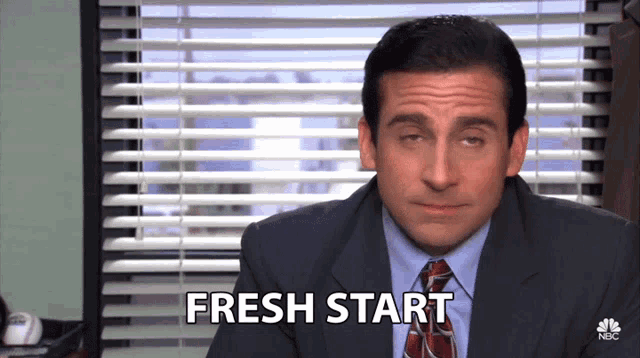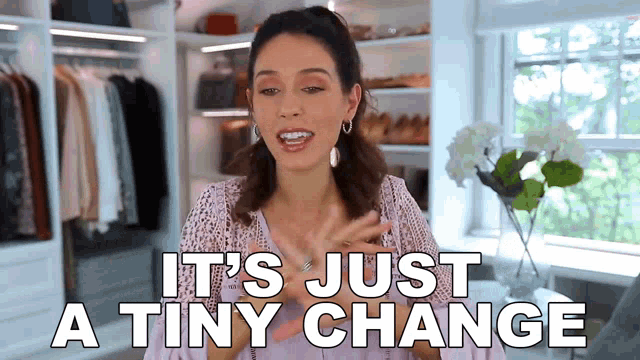Employees are more likely to set goals at the start of the year because they feel more motivated due to the “Fresh Start Effect.”
But 90% of New Year’s resolutions fail and don’t see the light of day in February. That’s demotivating. And deflating. Especially when the spark of January starts to fade.

Psychologists believe the main reason employees abandon resolutions is because they set overly ambitious goals and shoot for the stars with the best intentions. But false promises are the reality, and so is this: you’re likely to fail.

In this blog, we’ll explore why New Year’s goals fall flat for employees, how the “Fresh Start Effect” boosts motivation, and what HR can do to help employees’ goals stick through realistic goal setting and a few other ways to keep motivation flowing throughout the year.
Why New Year goals fail
Employees reset goals or set them for the first time when there’s a clear line in the sand, like a new week, a new month, or a new year—because a fresh start feels exciting. There’s a boost in motivation because they feel like they can use the day as a fresh start.

But these well intentioned goals are pushed aside when competing priorities take over and busy work life creeps back into routines. Without an ongoing support system or clear structure, plans slip into the background, making it hard to stay on track.
So with employees trickling back into the office, how can you help employees create professional and personal goals that actually stick?
.gif?width=480&height=360&name=giphy%20(1).gif)
The ‘Fresh Start Effect’
There’s nothing more powerful than making a change now, as opposed to talking about making a change tomorrow.
The “Fresh Start Effect” is the idea that employees feel more driven to chase goals during key landmarks, like a new week, a new project, or the start of the year. These landmarks act as mental cues for individuals to initiate changes and undertake productive actions.

Studies show that these moments act as mental resets. A fresh start can help employees revitalise career aspirations, set ambitious targets, and amplify commitment towards professional growth and development.
Now these landmarks don’t have to just be days of the week, think birthdays, a change of season, the start of a month, or starting a new project.
So, how can you help employees ensure their goals are turned into a reality? Here are some research-backed tips to keep in mind.
Hook goals onto meaningful moments
Meaningfulness is the key to capitalising on the fresh start effect.
Researchers in 2014 ran an experiment in HR departments across four American universities. The goal was to encourage employees to save more money in their retirement funds.
.gif?width=480&height=270&name=giphy%20(2).gif)
By getting them to do this at a personally significant time like their birthday, these employees saved 20-30 per cent more money in the year that followed as opposed to employees who were asked to put aside money without a sticky personal or professional motivation.
So employees are more likely to take action on a special day rather than another average Thursday. Because if the date carries meaning, they’re more likely to dive in.
Make goals realistic
The most common mistake employees make is that they shoot for the stars, instead of going for the moon. They take on too much. Goals should be bite sized and achievable. Not overly ambitious.

Encourage them to include at least one personal goal. It could be something outside of work that fuels their creativity or well-being.
Behavioural change habits
If you don’t know who James Clear is, you would’ve heard about his best-selling book Atomic Habits. The book helps readers make small changes to their habits. It’s a crash course on how to make changes to habits and make sure goals stick.

The top line ideas to change habits are:
- Cue: Make it obvious
- Craving: Make it attractive
- Response: Make it easy
- Reward: Make it satisfying
Let’s take a deeper look at how you can help employees change habits to influence goals by using the example of an employee who sets a goal to upskill in sales development.
Obvious—ask them to carve out time each morning to learn a new skill for at least one week and set a recurring reminder in their calendar so they can’t miss it.
Attractive—it’s the anticipation of a reward that motivates employees to continue with a goal. So for employees who are reward-focused, try ‘temptation bundling’. Suggest they prepare a reward like an image of a new phone headset they’ll use for calls as a visual cue.
Easy—remove their barriers. If they’re chattier in the afternoon, tell them to set their calls in the afternoon as opposed to the morning. Or if they get demotivated in the morning and get stuck in emails, suggest they avoid opening their emails till 10 am.
Reward—it needs to feel satisfying for them to return to it. For example, the endorphin released after an employee wins an account after a gruelling call is what keeps them coming back for more. Make sure they receive a reward after completing an upskilling task because what is immediately rewarded is repeated.
Social pressure
Motivation doesn’t last because here’s a little secret—willpower is a myth.

Employees can use willpower for short bursts of motivation, but it’s not sustainable long term. They find it difficult to summon willpower again and again. So we need to find structures to keep ourselves honest.
At work, a great strategy is to keep other colleagues involved in your goals and plans. Because it’s hard to walk back on your promises once they’re shared. Peer pressure, when used for good, is a powerful motivator because it keeps others involved in their journey.
.gif?width=480&height=270&name=giphy%20(3).gif)
Conclusion
Sticking to goals is tough, but the right tools and moments can make all the difference. By tapping into the “Fresh Start Effect,” setting realistic targets, building better habits, and leaning on peer support, employees can turn wishful thinking into real achievements.
About Martian Logic
Martian Logic has been helping businesses fine-tune their HR strategies for years. We believe in simple, scalable solutions that give teams the freedom to flourish. Our HRIS is designed to help you hire smarter, nurture growth, and keep employees motivated. Want to learn more? Check out our other blog posts or contact us for a personal chat about your company’s needs.

